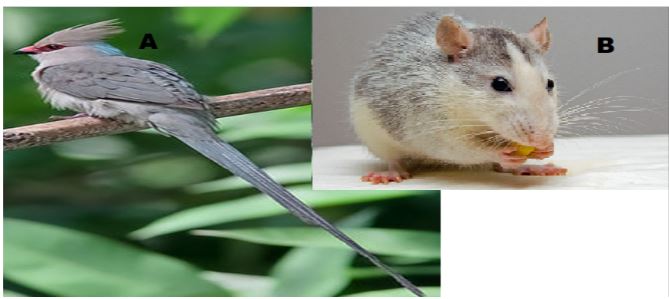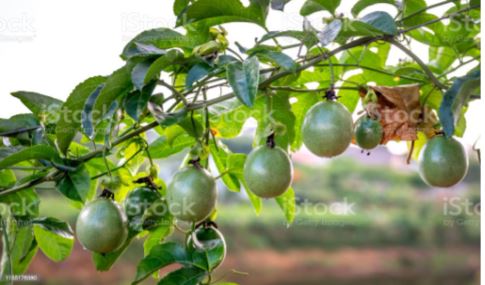Instructions
- This page consists of three sections A, B and C.
- Answer ALL the questions in sections A and B and only two questions from Section C.
Questions
SECTION A (30MKS)
Answer all the questions in this section in the spaces provided.
- Give four advantages of large scale farming. (2mks)
-
- Define nomadic pastoralism (1mk)
- State two advantages of nomadic pastoralism. (1mk)
- State four factors which determine soil depth. (2mks)
- Give four natural factors that would encourage the gully erosion on a farm. (2mks)
- State four ways in which trees help in soil conservation. (2mks)
- State four disadvantages of communal land tenure system. (2mks)
- State four factors that should be considered when selecting a forage crop species to be established in a given area. (2mks)
- What do you understand by the following terms. (3mks)
- Seed dressing
- Seed inoculation
- Chitting
- Give two advantages of compound fertilizers (1mk)
- State two effects of varying spacing in maize production. (2mks)
- State four symptoms of viral diseases in crop production. (2mk)
- List four branches of livestock farming. (2mks)
- Name four varieties of dry beans (2mks)
- Give four precautions taken to prevent pest attack in stored produce. (2mks)
- What is organic farming? (1mk)
SECTION B (20MKS)
- Study the diagrams below carefully and answer the questions that follow.
- Identify the pests labelled A and B (2mks)
- State two effects the pest labelled A causes on a maize plant. (2mks)
- List three effects of pest B in stores. (3mks)
- State three methods of controlling striga weed. (3mks)
- The diagram below shows a field management practice carried out on a fruit crop.Study it carefully and answer the question that follow.
- Identify the practice (1mk)
- Give two reasons for carrying out the above practice. (2mks
- State three reasons for storing beans after harvesting. (3mks)
- State three advantage of processing farm produce. (3mks)
- Define the term drainage. (1mk)
SECTION C (40MKS)
Answer any two questions from this section in the spaces provided.
-
- Describe eight farming activities that would encourage soil erosion (8mks)
- Describe the harvesting of cotton. (8mks)
- Describe seedbed preparation for carrot production. (4mks)
-
- Describe ten factors that would determine the nutrient content of hay. (10mks)
- Describe ten advantages of using organic matter for mulching. (10mks)
-
- Explain six morphological features of weeds that influence selectivity of herbicides.(6mks)
- Give five disadvantages of zero grazing system. (5mks)
- Describe nine factors considered in the selection of planting materials. (9mks)
Marking Scheme
-
- Provides a lot of employment
- High output
- Enjoys economies of large scale
- Source of foreign exchange from export market
- Source of capital or revenue for governance
-
- it’s a system of farming where livestock are kept and moved from place to place in search of pastures and water.
- there is social cohesiveness and security among members of community.
- Reduced parasite build up
- Nomads are able to rear a large number of livestock.
-
- topograph
- Parent rock
- Climate
- Age of soil
- Biological activities
-
- soil type
- Steepness of slope or topograph
- Rainfall intensity and amount
- Length of slope
- Size of water shed or catchment areas
-
- reduce speed of surface run off
- Reduce speed of rain drops on soil
- Reduve volume of runoffs due to increased infiltration
- Improves soil structure
- Acts as wind breakers
-
- Inbreeding is common.
- No incentive to develop the land.
- Spread of pests and diseases .
- Low yields per unit area.
-
- adaptability to the area
- Production potential
- Skills required in establishing
- Soil type
- Resistance to pest or diseases
- Whether pure or mixed strnd
-
- seed dressing-the coating of seed with a fungicide or insecticide to protect seedlings from soil borne pests.
- Seed inoculation-coating of legume seeds with right strain of rhizobia bacteria to enablefix free atmospheric nitrogen into the soil.
- Chitting-putting potato sets in a partially dark room to break their dormancy.
-
- Cheaper and more convenient to apply saving on time cost and labour.Balanced in all plant nutrients
- Easy to store as they do not form lumps when stored for long.
-
- plant population or seed rates
- Time spent in planting
- Weed control
-
- leaf chlorosis
- Leaf curling
- Mosaic
- Malformation
- Resetting
-
- fish farming or aquaculture
- Bee keeping or apiculture
- Poultry keeping
- Pastrolism
-
- wairimu
- Mwitemania
- Rosecoco
- Canadian wonda
- Yellow haricot
- Mwezi moja
-
- seed dressing
- Proper drying
- Clean and dusted store
- Rodent or insect proof
- Well ventilated
- growing of crops and rearing of livestock without using agrochemicals.
-
-
- A-mouse bird
- B-rat
-
- lowers quantity of grains or feedon grain
- lowers quality of grain
- open husks and encourage grain rotting.
-
- bores holes in containers
- Transmit diseases
- Cause qualitative and quantitative loss of produce.
- Contaminate produce of urine
-
- crop rotation
- uprotting and destroying
- application of organic manures eg F.Y.M
- use of resistant variety
- interplsnting cereals with legumes
- use suitable herbicides
-
-
-
- Trellishing
-
- to produce clean fruit
- to control soil borne pests and diseases
- For easy harvesting
-
- To ensure availability of produce all year round
- for purposes of trade
- for retention of seeds for planting next season.
-
- improves flavor
- Improves keeping quality
- Reduce bulkiness
-
- the removal of excess water to prevent water loggings and maintain soil structure.
-
-
-
- overgrazing or overstocking the land
- Ploughing along the slope
- Continuous cropping or mono cropping
- Uncontrolled burning of vegetation
- Cultivating when the soil is too dry
- Uncontrolled deforestation on steep slopes
- Over cultivation of land to a fine filth
- Poorly laid foot paths
- Cultivation along the river banks
-
- picked manually
- grading of seed cotton starts during harvesting.\
- seed is sorted into two grades AR(safi) and BR (fifi)
- AR is the first grade free from seed damage and foreign matter.
- BR may not have all the required qualities
- Pick to have two containers one for AR and the other for grade BR
- Care should be taken to ensure no foreign matter and mixed with seed cotton.
- Picking is avoided when cotton is wet
- Sisal bags should not be used.
-
- dig seed bed deeply
- soil worked to a fine filth.
- No use of manure
- Make rows of drills 30cm apart.
-
-
-
- period of storage
- Length of drying period
- Stage of growth at harvesting time
- Weather condition during drying period
- Species of hay crop
- Method of storage
- Fertility of soil
- Pest or diseases attack on crop
- Leaf content of forage material
- Degree of damage during caring or handling
- Physical form the crop is fed to the livestock
- Amount of foreign materials present in hay.
-
- controls soil erosion
- improves water filtration
- regulates soil temperatures
- improves soil structure after decomposition
- increases microbial activities
- increases water holding capacity after decomposition
- buffer soil PH
- adds nutrients after decomposition.
-
-
-
- leaf angle or inclination
- Nature of leafy surface
- Presence or absence of underground structure
- Crop differential heights
- Location of growing points
- Whether deep or shallow rooted.
-
- labour intensive
- capital intensive
- not easy to detect oestrus
- suited to high potential areas
- faster spread of diseases
- requires a lot of skills
-
- ecological suitability
- purity of material
- germination percentage
- certified seeds
- parent plant
- maturity of seeds
- size of seeds
- shape of seeds
- storage period or age.
-
Download Agriculture Paper 1 Questions and Answers - Bunamfan Cluster Pre Mock Exam 2022.
Tap Here to Download for 50/-
Get on WhatsApp for 50/-
Why download?
- ✔ To read offline at any time.
- ✔ To Print at your convenience
- ✔ Share Easily with Friends / Students



